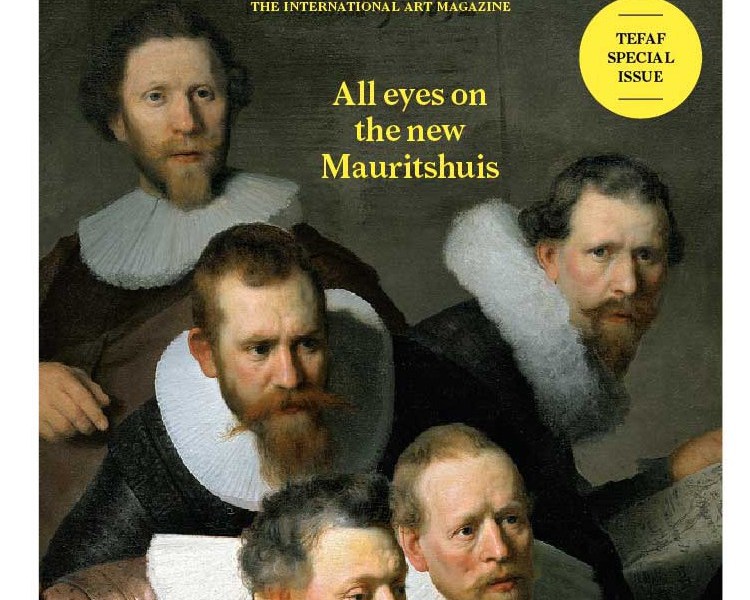This summer sees the reopening of the Mauritshuis in The Hague following a major expansion and renovation project. To celebrate, the cover of Apollo’s March issue features a detail from one of the museum’s most significant paintings, Rembrandt’s The Anatomy Lesson of Dr Nicolaes Tulp (1632).
This early masterpiece shows the anatomist at work on the forearm of the corpse of Aris Kindt, hanged for armed robbery and now turned over to medical science. The criminal’s body is so audaciously monumental – immense and marmoreal – as to give it a grandeur that surpasses what it’s being subjected to.
The painting asks us to measure our own fascination against the quality of scrutiny it displays in Tulp’s immediate audience – even though, as W.G. Sebald observed in an evocative passage in The Rings of Saturn (1995), the surgeons’ attention is not directed at the opened flesh before them so much as at a diagram in an anatomical atlas lying beyond it.
Transposed to the magazine cover, these striking faces, with their care and intelligence, seem apt representatives of the Mauritshuis and its collection. In the vigilant detailing of their physiognomies, of their greying, wiry or receding hair, of each head standing out uniquely against its white ruff, they become illustrative of the meticulous painting of the Dutch Golden Age. But in their insistent concentration, they might also exemplify the intimate gaze with which many of us dwell on such works.
I hope readers will enjoy both the isolation of this detail and that moment when they recall and recognise its wider context. We’ve no wish to slide the Mauritshuis on to the dissection table, of course. Visitors to the museum later this year will find it both familiar and reinvigorated. Rembrandt’s great painting engenders a similar response: it has a vitality that belies its mortal knowledge.
Click here to buy the March issue
Unlimited access from just $16 every 3 months
Subscribe to get unlimited and exclusive access to the top art stories, interviews and exhibition reviews.















![Masterpiece [Re]discovery 2022. Photo: Ben Fisher Photography, courtesy of Masterpiece London](http://www.apollo-magazine.com/wp-content/uploads/2022/07/MPL2022_4263.jpg)
It’s time for the government of London to return to its rightful home